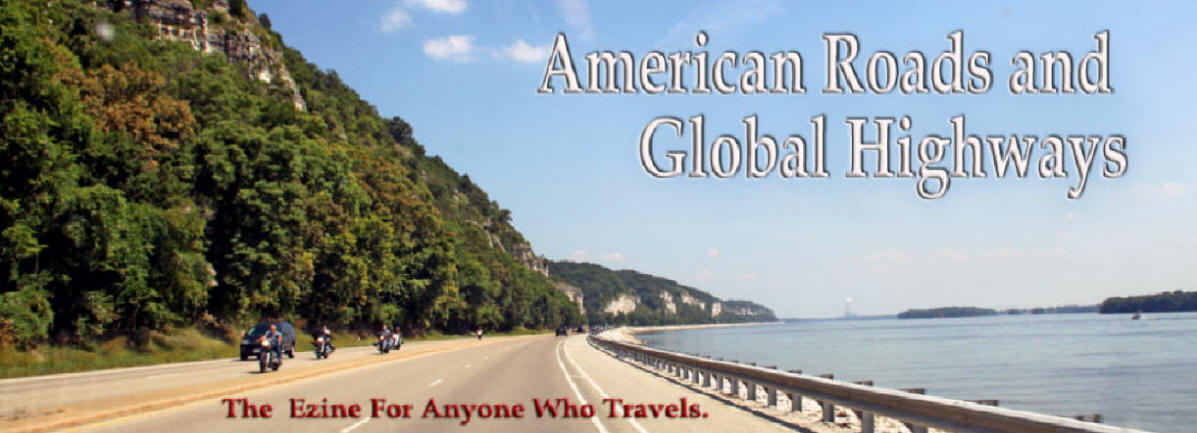|
Back in 1966 a North
Georgia English teacher needed a way to get his
students more engaged. He gave them a chance to
come up with a project that would make the
course more interesting. The result was an idea
for a magazine that focused on local (Southern
Appalachian) folklore, tradition, and culture.
The students could use their own families and
the local community as a source of material.
The magazine was
named “Foxfire,” the name of a glow-in-the dark
fungus that grew in the nearby hills. Foxfire
Magazine has been in continuous production
since 1967 and currently produces two issues
annually. Articles are based on interviews of
people who understand local history and customs,
making this a living history project, “exploring
how our past contributes to who we are and what
we become—how the past illuminates our present
and inspires imagination.”
While much of the material was on culture and
tradition, many of the articles covered craft
techniques, Southern Appalachia skills, and
outdoor know-how. These topics were practical,
like hog dressing, tools and skills, log cabin
and chimney building, making a basket out of
white oak splits, and preserving fruits and
vegetables. The magazine was timely, as the
back-to-the-land movement was popular at the
time.
The Foxfire Magazine generated global
interest in the folkways and crafts of the
Southern Appalachians. In 1972, the first
Foxfire Book was published, containing
articles from the magazine that centered on the
trades, crafts, and livelihoods of the
Appalachia people. It turned out to be a
best-seller, creating a series of a dozen
Foxfire books and additional companion books. In
1974, Foxfire used book profits to purchase land
which was used to develop a museum and heritage
center. It is an immersive outdoor museum,
including living history experiences. An
experience that represents life in the Southern
Appalachian Mountains from the 1820s to the
1940s.
The Museum
So, where is the
museum? Foxfire was developed at the Rabun
Gap-Nacoochee School in Rabun, Georgia, located
roughly halfway between Atlanta and Asheville.
The success of the
Foxfire
Book produced the profits that allowed for
the purchase of an old orchard in nearby
Mountain City, Georgia, near U.S. 441 that leads
to the Great Smoky National Park. The old
orchard was the beginning of the museum. One
student championed an old mill building near her
home in Otto, North Carolina. It was moved to
the site in 1974 and became the first of over 25
historic structures moved to the museum campus.
The museum is an easy day trip from Asheville,
Atlanta, Knoxville, or Greenville, South
Carolina.
All buildings and
exhibits are scattered along a half-mile-long
trail system that flows from building to
building over a hilly area. The trail system is
built to park standards with picnic benches and
places to sit along the tour. Those unable to
walk along a hilly trail are allowed to drive
using a road system that runs through the area.
Interpretative signs are located along the road
and inside buildings, stressing the stories
behind the people and culture of the region.
Most noticeable are
the cabins on the hillsides, each containing
artifacts stressing various aspects of Southern
Appalachian culture. Old appliances, furniture,
craft tools, and everyday items furnish each
cabin. An interpretative sign might tell the
story of who built the cabin or lived in it, or
perhaps a story putting the contents into a
cultural perspective. There are surprises; an
antique radio plays in one cabin, with a
broadcast from sometime in the 1930s.
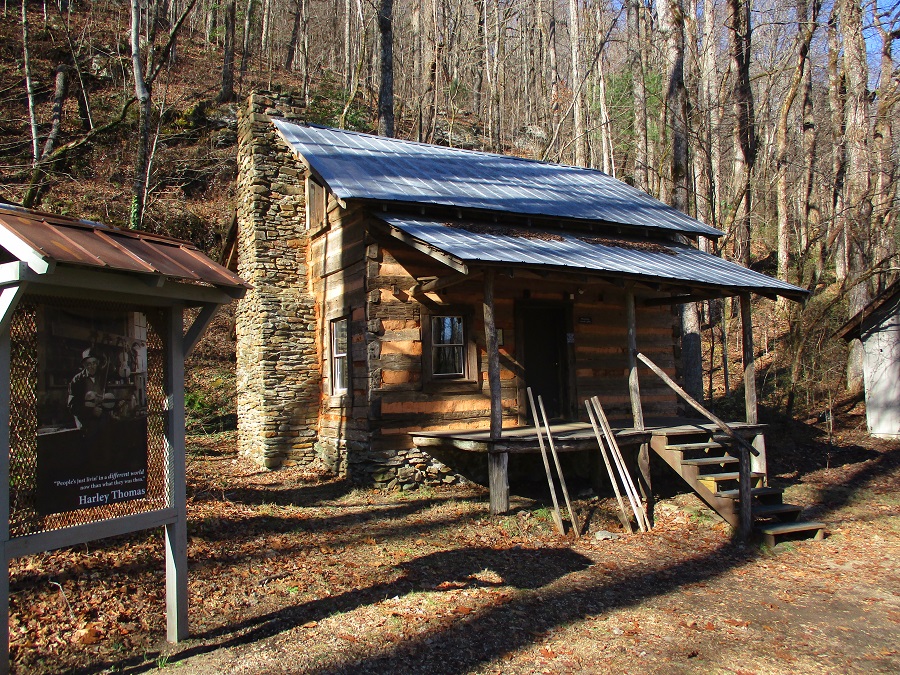
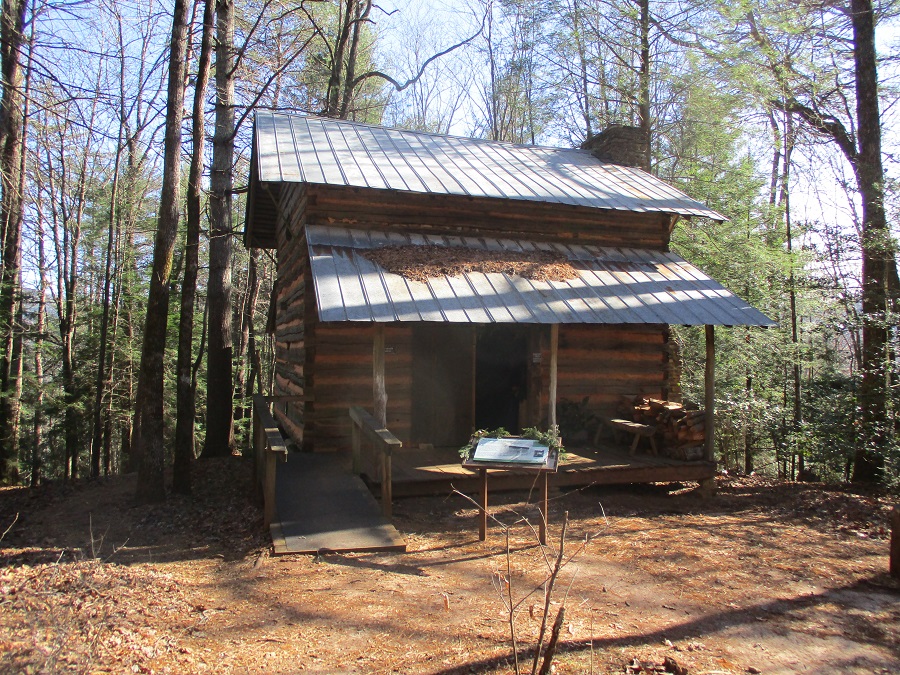
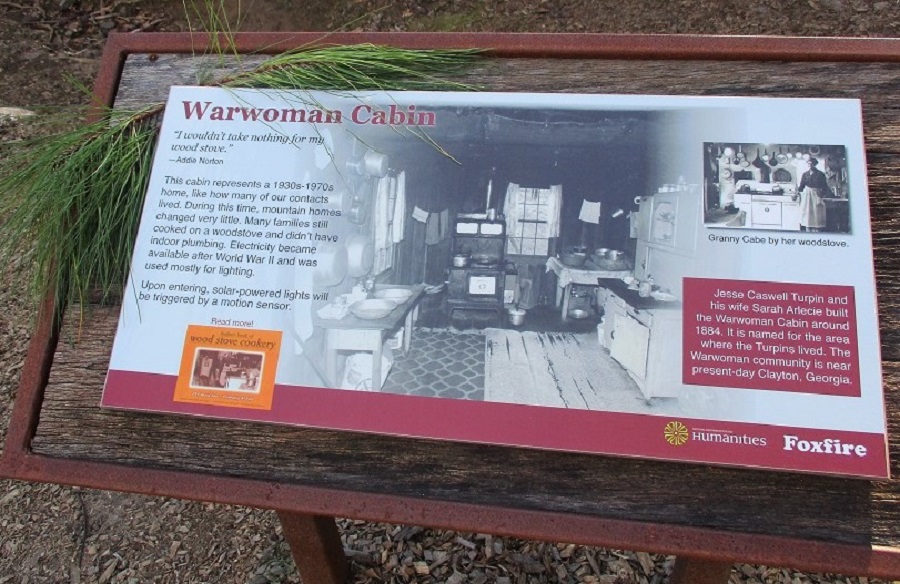
Inside the cabin
might be a bedroom, kitchen, or work area
setting. Each cabin had a theme. Items varied
from the nineteenth to early twentieth century
in age, and varied from room settings to various
tools and craft items.
 |
| In a cabin, some of the
appliances and other items of everyday
use. |
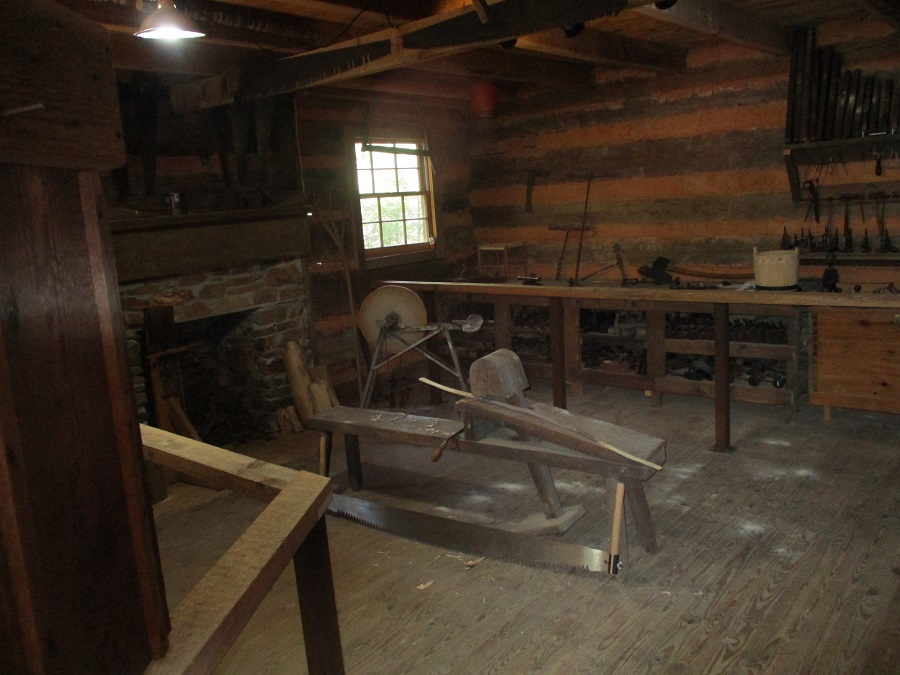 |
| In a cabin, some tools of
everyday use. |
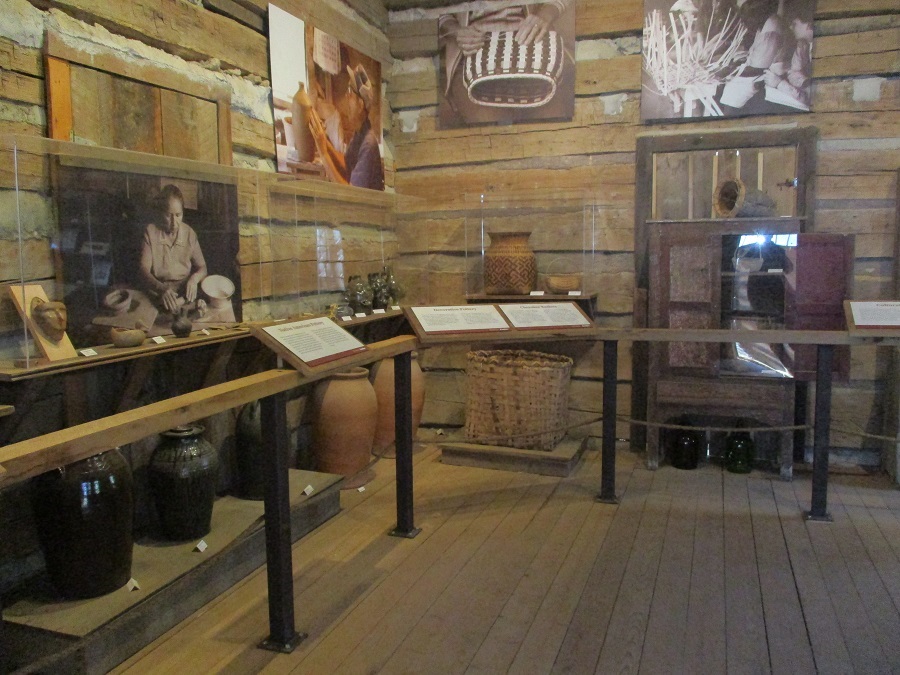 |
| In a cabin, a pottery
theme. |
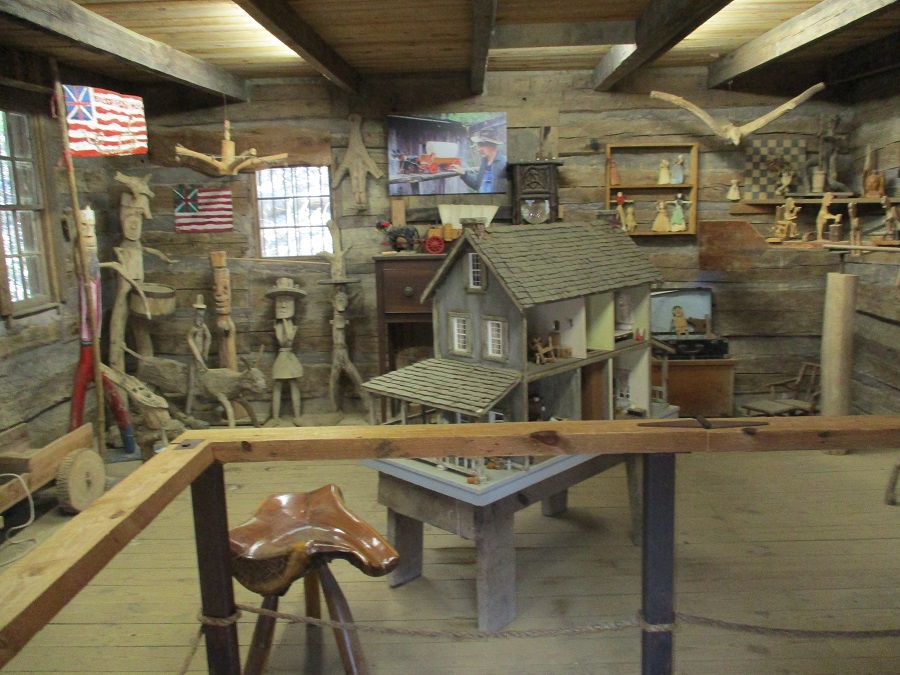 |
| In a cabin, toys and
handicrafts. |
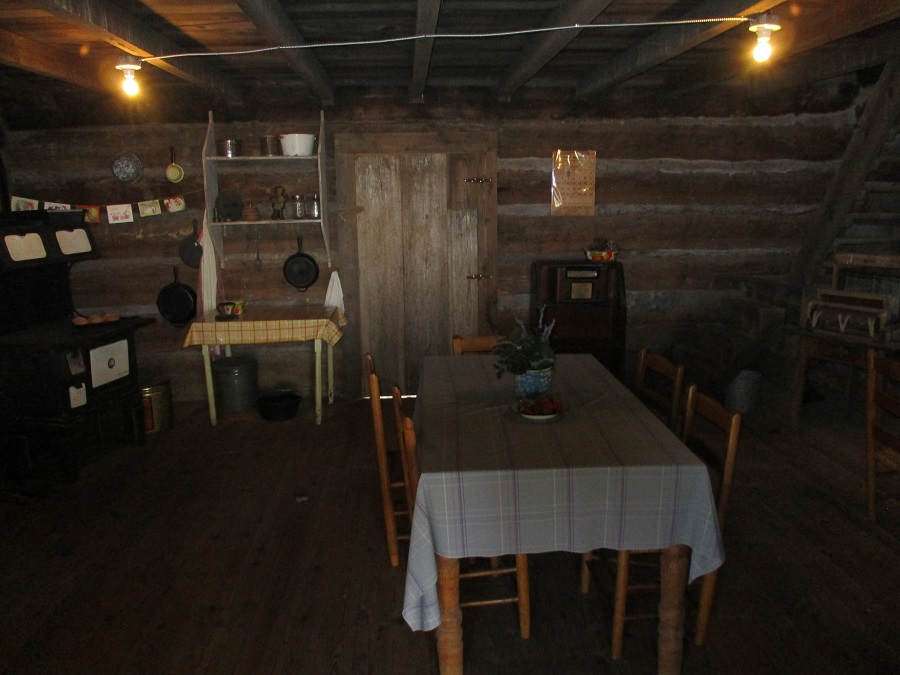 |
| In a cabin, ready for a
meal. |
Some of the buildings
are barns or sheds. As you’d expect, they
contain larger items, like boats, wagons, or
even a moonshine still. Each has a theme which
was usually explained in an interpretative sign.
Some cabins or buildings had demonstrations of
trades or crafts (like weaving, blacksmithing,
or broommaking).
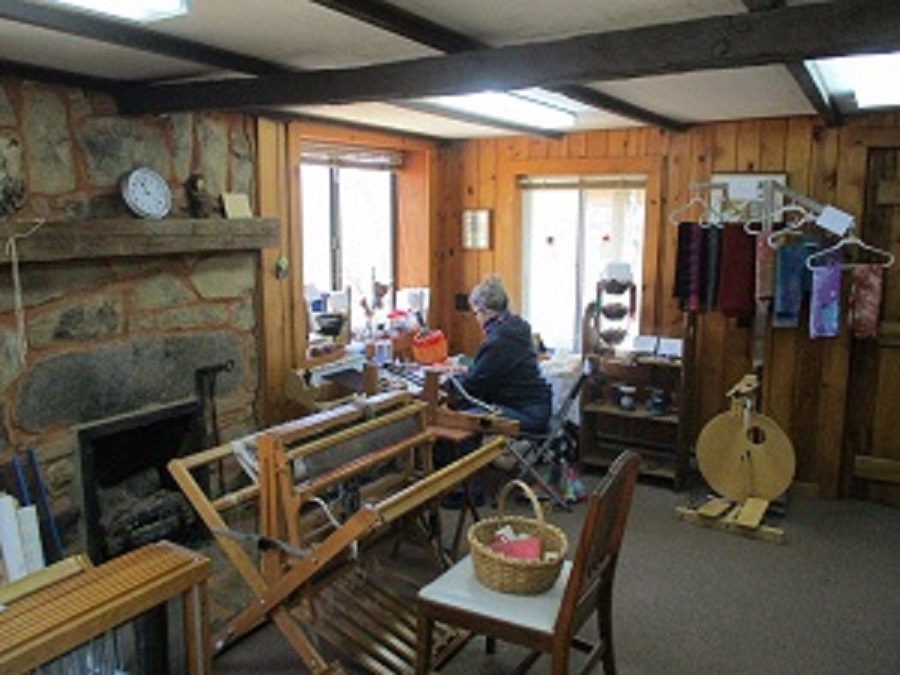 |
| Tiger House Weaving Studio. |
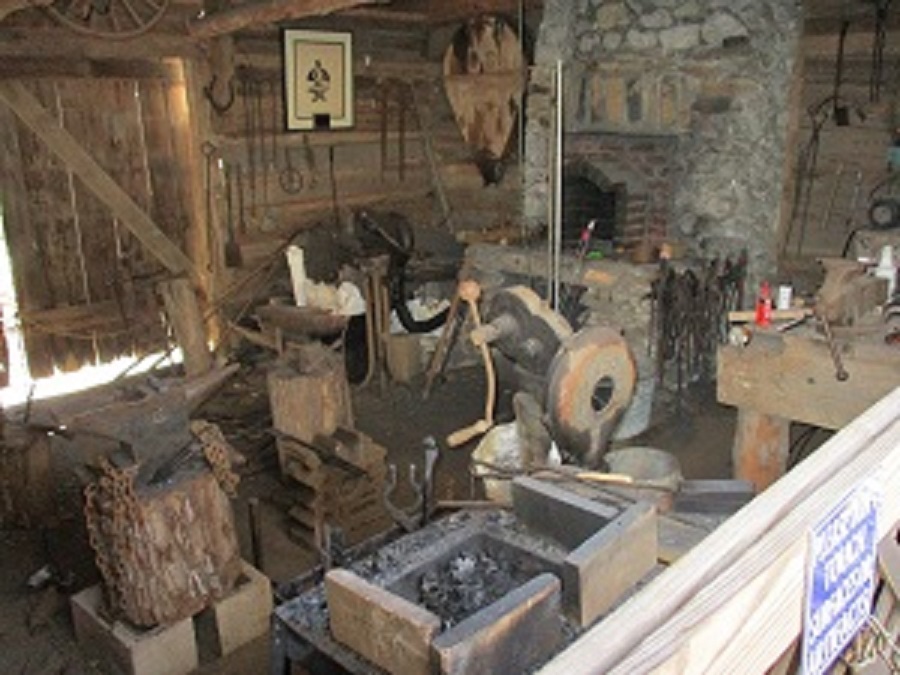 |
| Blacksmith Shop. |
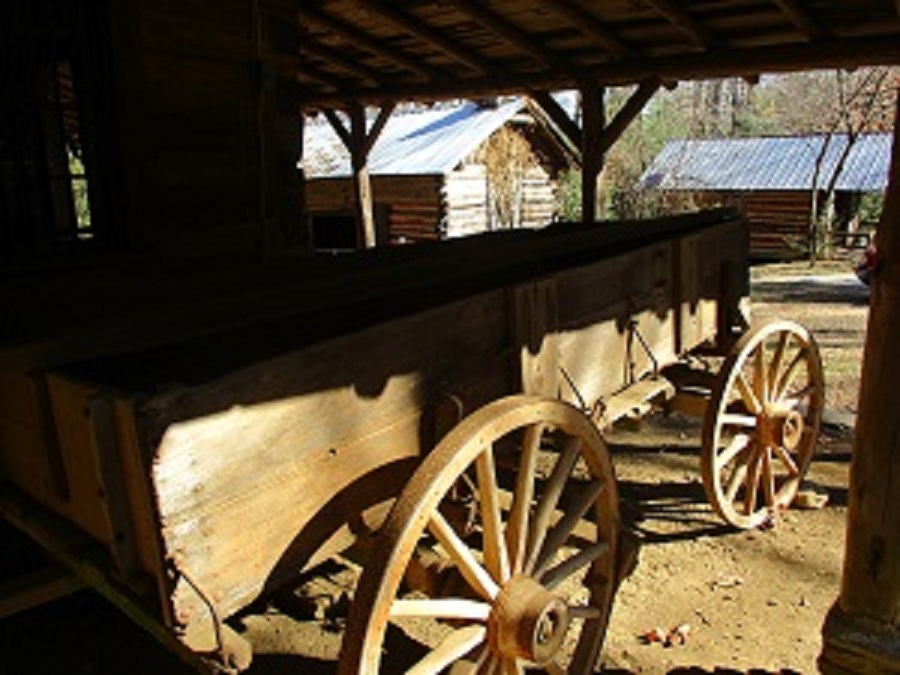 |
| What you would expect on a
farm. A rugged wagon. |
 |
| Some wagons are special. This
is the “Zuraw Wagon,” claimed to be the
only surviving wagon from the “Trail of
Tears” where Native Americans were
removed from the Southeast to Indian
Territory in present-day Oklahoma. This
building has a theme of Cherokee
history.
|
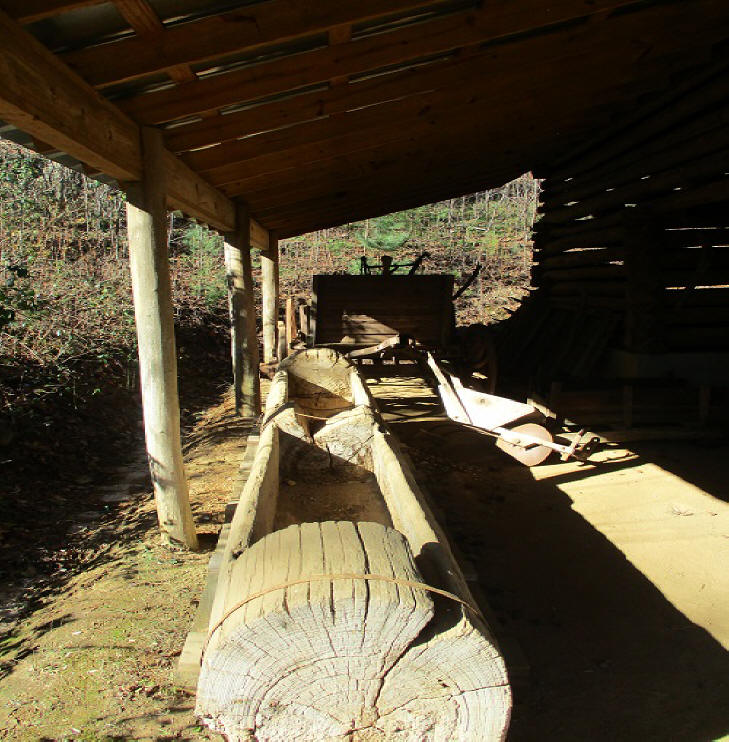
Look closely to see the crafted boat. |
 |
| One cabin contained a
still, with much background on
moonshining.
|
|
Some building served
a specific function, like the gristmill and
chapel. These were still in the original form
with all the equipment. The gristmill even
included the mill race that powered the
waterwheel. If you hike all the way
to the chapel at the top of the hill, you are
allowed to ring the church bell for all to hear.
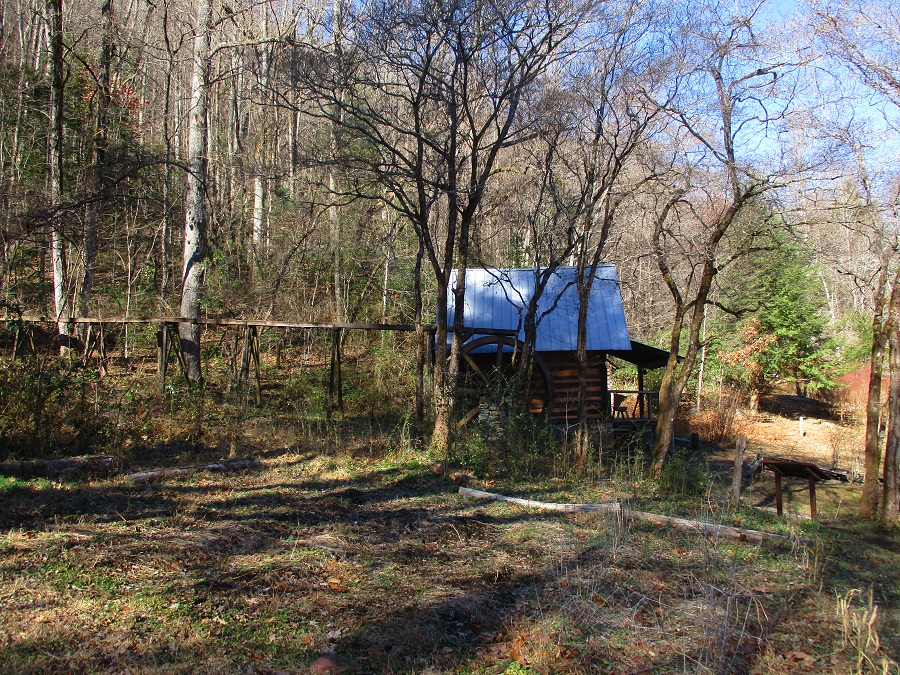 |
| A functioning gristmill, with
water wheel and mill race to power it.
|
 |
| There are plenty of
explanations on how and why things
worked as they did. |
 |
| The chapel at the top of the
hill. |
 |
| Inside
the chapel. |
There were lots of
smaller building to go along with the larger
ones, like a smokehouse, wagon shed, mule barn,
and root cellar.
 |
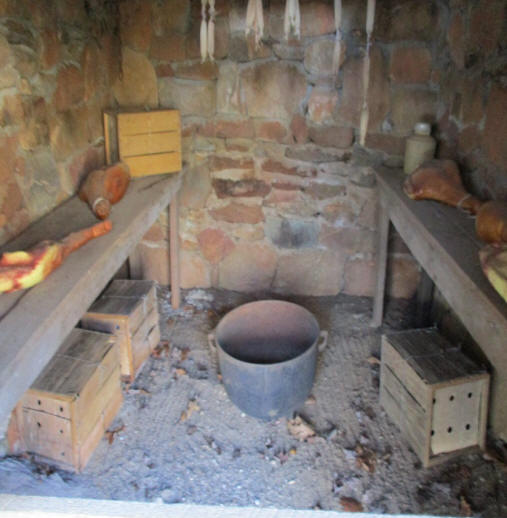 |
| The
country smokehouse. |
Inside the smokehouse. |
 |
| The root
cellar was important to country life.
|
 |
| There is much interpretation
that includes people. Some of it is
simple like this. |
A Pandemic
Destination
My last few articles have been
destinations that allow for safe pandemic
travel. This museum is
particularly appropriate as a safe destination.
The sole interaction was to purchase a ticket
through a window. From there it is on
foot-travel from building or cabin to the next
one. With simple timing as you walk the paths,
there is no problem avoiding people. There is
enough history and culture to maintain hours of
interest. If you liked the books, you’ll love
the museum.
Author: Thomas J. Straka is a forestry
professor emeritus at Clemson University. He has
a keen interest in political and natural
history.
For additional
information:
http://www.foxfire.org
https://www.foxfire.org/about-foxfire/
https://www.foxfire.org/visit-us/
|
